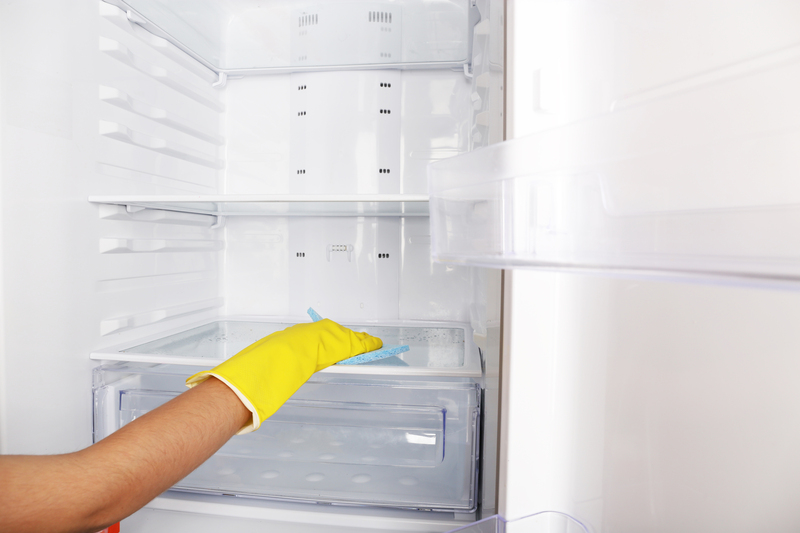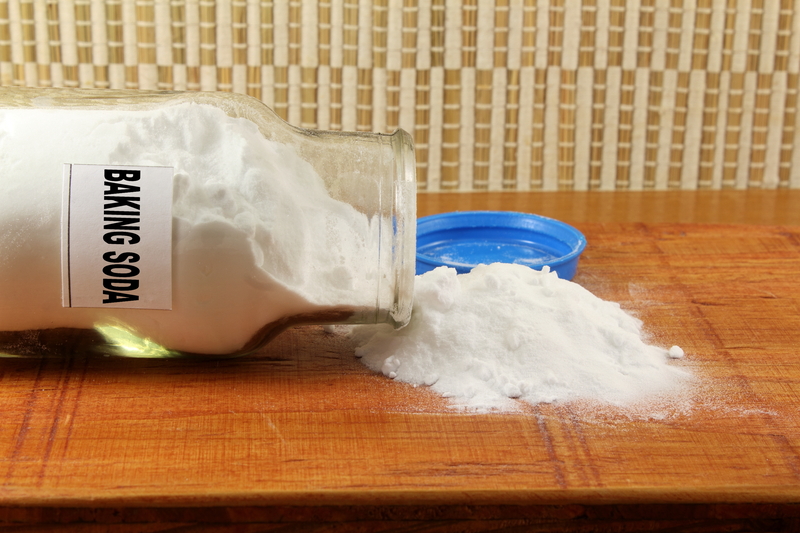Achieve clear window sills with safe and simple mould-removal solutions
Posted on 25/06/2025
Achieve Clear Window Sills with Safe and Simple Mould-Removal Solutions
Are you tired of seeing unsightly spots and black stains on your window sills? Mould is a common nuisance for homeowners, yet it's often underestimated in terms of health risks and long-term property damage. Achieving clear window sills with safe and simple mould-removal solutions is more accessible than you might think. In this comprehensive article, we'll explore proven methods, easy tips, and the best products to banish mould from your window sills - all while keeping your loved ones safe.
Understanding Mould on Window Sills
Mould, sometimes spelled "mold", is a type of fungus that thrives in moist, humid environments. Your window sills - especially those made from wood or unsealed materials - are the perfect breeding ground for mould spores. This occurs due to condensation, leaks, or poor ventilation in rooms like bathrooms, kitchens, and basements.
Why Does Mould Grow on Window Sills?
- High Humidity: Steam from cooking or showering raises moisture levels near windows.
- Poor Ventilation: Lack of air flow allows damp spots to linger on or around windows.
- Condensation: When warm, moist air meets cool glass, water droplets form and settle on sills.
- Leaks: Rain or plumbing leaks provide additional moisture, making sills worse for mould growth.
Clear, healthy window sills aren't just about aesthetics - they're essential for indoor air quality and property longevity.

The Risks of Ignoring Mould on Window Sills
Visible mould is more than an eyesore. Prolonged exposure, even in small amounts, can have negative effects on your health and home. Here's why you must take action:
- Respiratory Problems: Mould spores can exacerbate asthma, allergies, and cause coughing or throat irritation.
- Weakened Structure: Over time, mould can eat into wood or painted sills, weakening them or causing peeling and rot.
- Unpleasant Odours: Persistent musty smells often arise from hidden or visible mould colonies.
- Poor Indoor Air Quality: Active mould growth lowers air quality, impacting overall well-being.
Don't wait until the problem spreads - discover safe and simple mould-removal solutions today.
Safe and Simple Mould-Removal Methods for Window Sills
When cleaning your window sills, focus on both effectiveness and safety. Harsh chemicals can be dangerous to pets, children, and your lungs, so we recommend these proven, eco-friendly solutions:
1. White Vinegar Solution
- Mix equal parts white vinegar with warm water in a spray bottle.
- Spray directly onto the mouldy area.
- Let sit for at least 1 hour.
- Wipe clean with a damp cloth. Repeat as needed for stubborn stains.
Vinegar is mildly acidic and kills up to 82% of mould species without harsh fumes.
2. Baking Soda Scrub
- Combine 1 tablespoon of baking soda with 2 cups of water.
- Apply using a sponge to gently scrub mouldy sections.
- Wipe off with a clean, moist cloth.
Baking soda is safe, deodorises, and is gentle on surfaces, keeping paint and sealants intact.
3. Hydrogen Peroxide Application
- Transfer 3% hydrogen peroxide into a spray bottle.
- Spray on affected areas, ensuring coverage.
- Let sit for 10-15 minutes to break down the mould.
- Scrub gently with a soft brush or sponge.
Hydrogen peroxide is effective against bacteria and mould, and unlike bleach, doesn't leave toxic residue.
4. Soap and Water for Mild Cases
- For minimal or early-stage mould, use hot soapy water and a sponge.
- Wipe away thoroughly and dry completely.
Soap loosens dirt and some mould, making it easier to remove in the initial stages.
5. Commercial Mould Removers
- Choose non-toxic, biodegradable sprays designed for household mould.
- Follow manufacturer's instructions closely.
- Test manufacturers like EC3, Concrobium, or HG Mould Remover.
Read labels and avoid products with high VOCs or chlorine bleach when possible, especially on painted or wooden window sills.
Step-by-Step Guide: How to Remove Mould from Window Sills
-
Protect Yourself:
- Wear gloves, a mask, and safety goggles before beginning.
- Keep pets and children away from the area during cleaning.
-
Open Windows:
- Improve air circulation to disperse spores and fumes.
-
Prepare Your Solution:
- Choose one of the above safe mould-removal sprays or mixtures.
-
Apply Generously:
- Spray or apply your chosen solution to all visible mould and slightly beyond the edges.
-
Let It Sit:
- Allow the product to dwell for the recommended time (typically 10-60 minutes).
-
Scrub Gently:
- Use a soft-bristle brush or sponge to dislodge mould from nooks and cracks.
-
Wipe and Rinse:
- Use a damp microfiber cloth to remove all residue.
- Dry the sill thoroughly with a clean towel.
-
Dispose of Waste Properly:
- Discard rags, sponges, and gloves to prevent spore spread.
-
Monitor the Area:
- Check regularly for recurring spots, and repeat cleaning if needed.
Common Mistakes When Cleaning Mould from Window Sills
- Not Drying the Area: Any lingering moisture can encourage regrowth.
- Scrubbing with Abrasives: Wire brushes or harsh tools may damage paint or wood.
- Ignoring Hidden Mould: Clean behind blinds, under caulking, and in window tracks.
- Improper Disposal: Reusing sponges or cloths can spread spores to other surfaces.
- Skipping Regular Checks: Without ongoing maintenance, mould can return quickly.
Preventing Mould: Tips for Clear and Healthy Window Sills
Once you've achieved mould-free window sills, prevention is key. Follow these expert-backed tips to keep mould away for good:
- Reduce Humidity: Use a dehumidifier to maintain indoor humidity below 60%, particularly in problem rooms.
- Ventilate Properly: Use extractor fans in bathrooms and kitchens or open windows after showering or cooking.
- Wipe Away Condensation: Each morning, check your windows and sills; dry any visible moisture right away.
- Seal Cracks: Repair and seal any leaks or gaps around window frames to prevent water ingress.
- Clean Regularly: Dust and wipe sills at least once a week to discourage spore settlement.
- Install Blinds or Curtains Carefully: Ensure soft materials don't trap moisture against the sills.
Are Bleach Solutions Safe for Window Sill Mould?
Many homeowners reach for bleach, but it's not always the best or safest option. While bleach can kill some surface mould, it often doesn't penetrate porous materials like wood, meaning spores may remain. Additionally, bleach can release harsh fumes and discolor or damage painted surfaces.
- Use bleach only as a last resort and in well-ventilated areas, keeping in mind its limitations and potential hazards.
- Opt for safer alternatives like vinegar, baking soda, or non-toxic commercial products for most window sill cleaning jobs.
When to Call a Professional
In most cases, DIY mould-removal solutions for window sills are sufficient. However, seek professional advice if:
- The area of mould is larger than one square metre.
- You notice structural damage, wood rot, or persistent leaks.
- Mould appears under the paint or deep within the window frame.
- Anyone in your home has severe allergies, asthma, or compromised immunity.
Choosing the Best Products for Safe and Clear Window Sills
If you prefer to buy rather than DIY, look for mould-removal products labelled as:
- Non-toxic and biodegradable
- Suitable for use on wood, paint, and sealed surfaces
- Fume-free or low-VOC
- Approved for indoor household use
Summary: Your Guide to Mould-Free, Spotless Window Sills
Achieving clear window sills with safe and simple mould-removal solutions protects your home, health, and indoor comfort. By choosing gentle, eco-friendly methods and maintaining proper ventilation, you'll not only eliminate stubborn mould but also prevent future outbreaks.
- Identify and treat mould quickly with safe, easy-to-source cleaning agents.
- Protect yourself and your loved ones during the clean-up process.
- Follow up with simple, routine measures to prevent recurrence and achieve sparkling window sills every day.
With a little knowledge and the right methods, you can restore your window sills to spotless, healthy perfection - without sacrificing safety, convenience, or your peace of mind.

FAQs: Achieving Clear Window Sills with Safe Mould-Removal
How often should I check my window sills for mould?
At minimum, inspect your window sills monthly - more often during wet seasons or if your home is prone to condensation.
Is it safe to use vinegar and baking soda together?
Yes, but not necessary for all situations. You can use them in sequence: clean with vinegar first, then scrub with baking soda for extra cleaning power.
Can I repaint over mouldy window sills?
Never paint over active mould. Always remove mould completely and allow the surface to dry before priming and painting.
Will cleaning mould fix condensation issues?
While cleaning removes current mould, addressing condensation requires improved ventilation, moisture control, and sometimes upgrading windows or insulation.
Conclusion
A mould-free window sill is more achievable than ever with the abundance of safe, affordable cleaning methods at your disposal. Make mould removal part of your regular maintenance routine and enjoy crystal-clear, healthy sills all year round.
Take these simple, science-backed steps, and say goodbye to mouldy frustrations forever.




